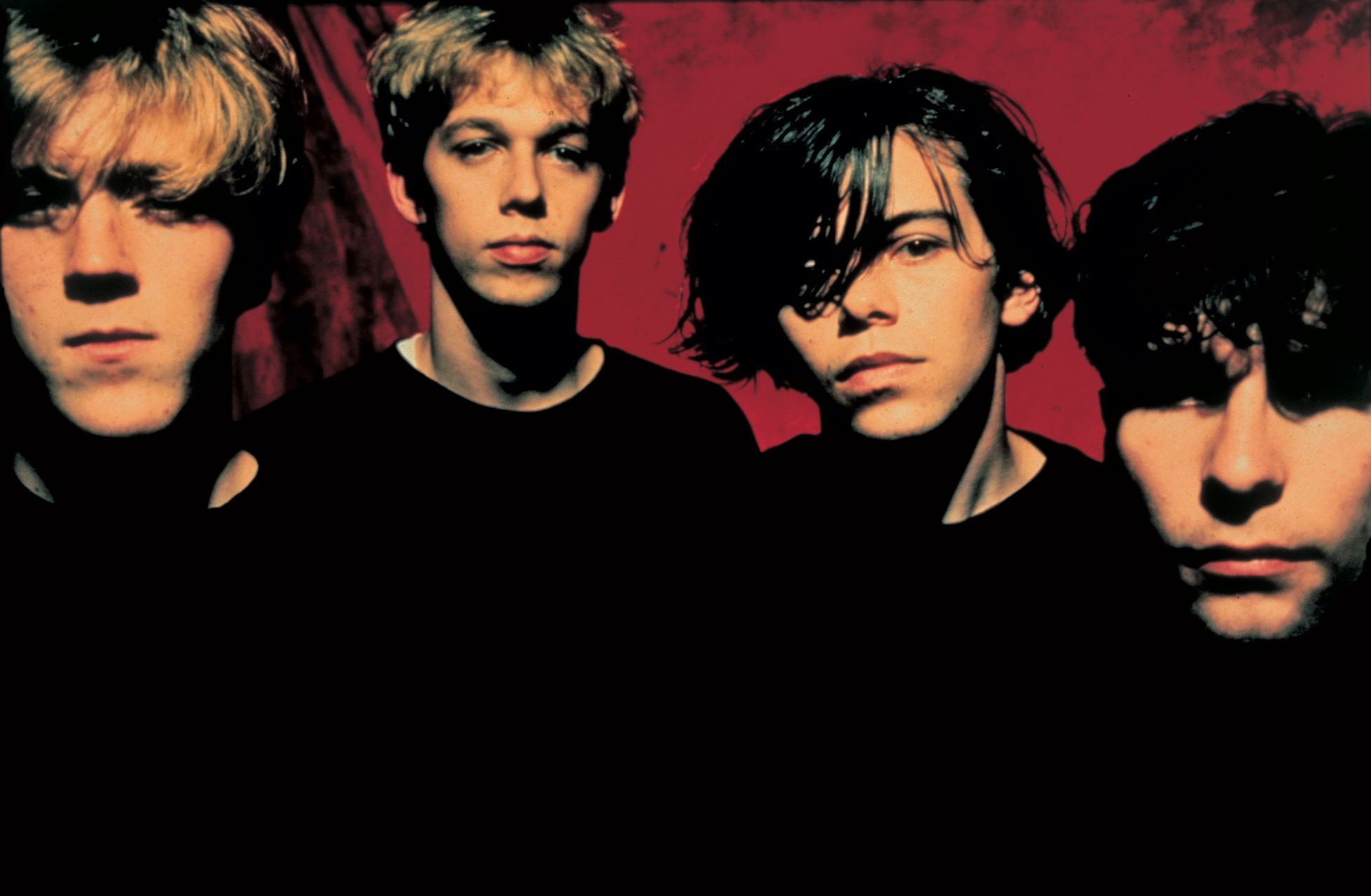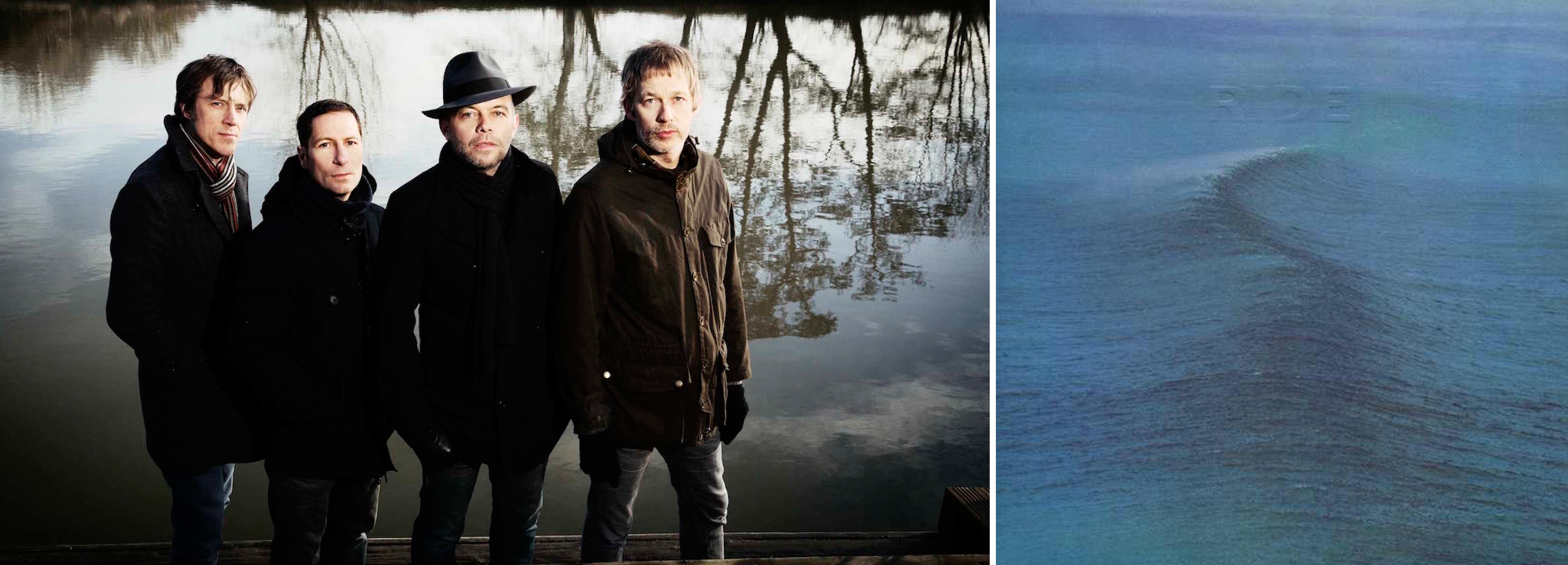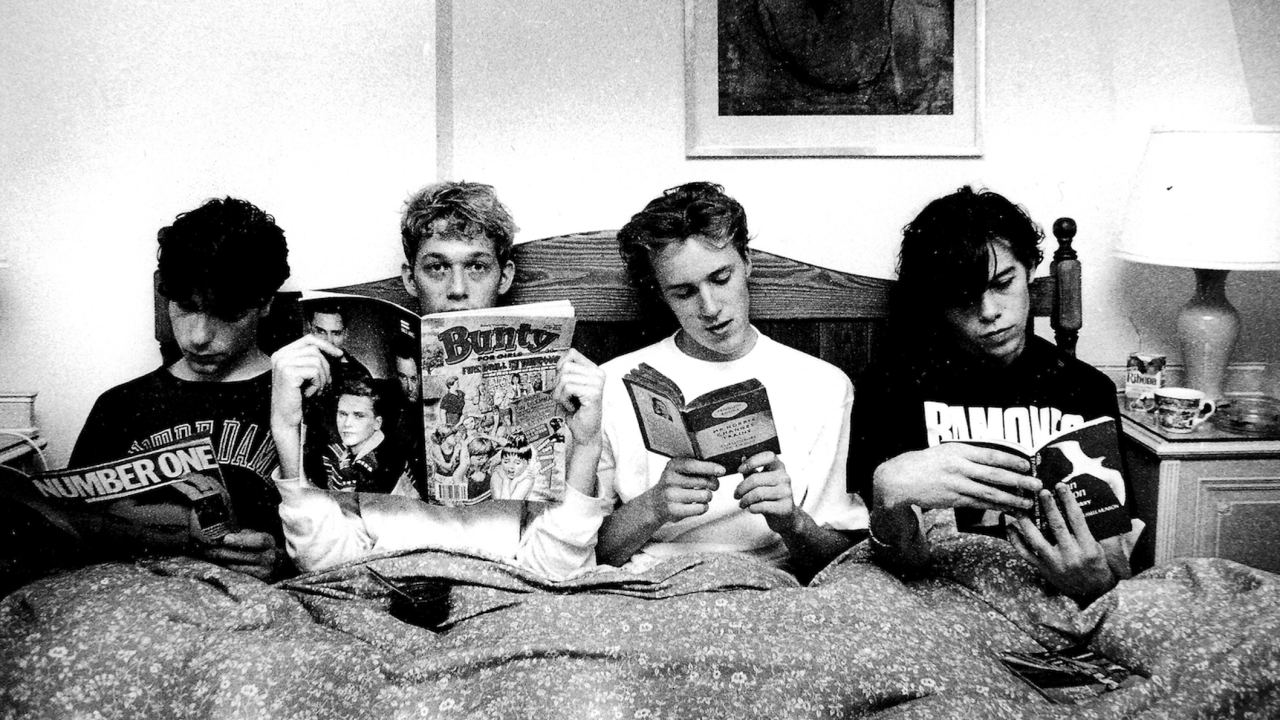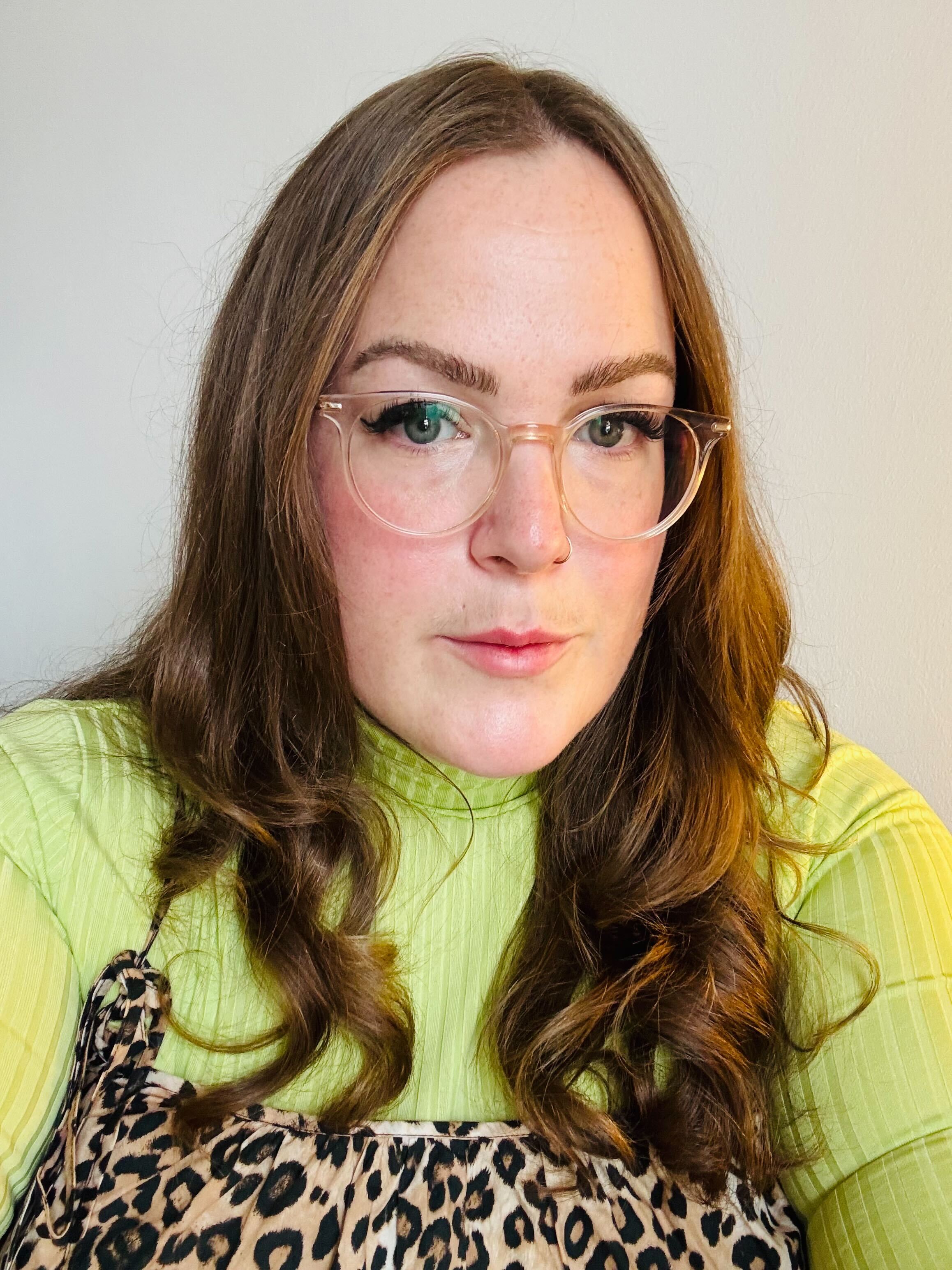On October 15, 1990, Ride released their debut album ‘Nowhere’.
It would go on to not just define their sound, but also inspire a generation of bands that followed in their wake. To celebrate the album’s milestone, the band are touring the album in its entirety, and reissuing an extended 15-track version later this year.
Here, the album’s chief lyricist and lead guitarist, Andy Bell, talks us through the album track by track.
“We knew when we made Nowhere that we were going to do certain things with it,” Bell tells TeamRock. “We had a concept, but it’s not a concept album. The band started pretty quickly; we got a deal and we did our first EP, and after the second [EP] we ran out of songs. We didn’t want to put our singles on the album, we wanted to start again and do an entire album at once. That was one of the rules we had. Then we found a picture [the non-cresting wave featured on the Nowhere album sleeve]. In my mind we knew the mood we were going for – which was this escapism, middle-of-nowhere thing – and we had this picture to base it on. So we did a few tracks with the ocean theme – like Seagull – and we did lots of water effects on the song Nowhere, which ended up being part of the CD. It was all part of the same session, and it was a very intense period of writing. To get from that second EP to what became Nowhere was a big step up in the songwriting quality. It was moving on from things like Chelsea Girl up to Paralysed, Dreams Burn Down and Polar Bear which had a bit more depth.”
SEAGULL
“Seagull can be seen as the theme tune for the album, in that it’s got the ocean imagery, and it’s kind of a statement of intent with a strong lyric – it feels like the first track on an album. Plus, it references back to Revolver by The Beatles, which opens with Taxman. Seagull has the same bass line, so it felt like there were a few things pointing at it as the opener. A few influences were coming in from books – this song was based on a book called Jonathan Livingston Seagull by Richard Bach, which is a hippy classic that we’d all read. It ties in with that imagery of the seagull who gets rejected by the flock for being too good at flying, mixed in with a bit of the Stone Roses. That album [The Stone Roses] had just come out, and we were really big fans of theirs and all the biblical stuff they sing about, how they put it in such dramatic terms. I Am The Resurrection is a breakup song in the same way Seagull is a breakup song – it’s making it grander than it is by dressing it up in fancy words. We were really into the Roses. We absorbed [their sound] into what we were doing, in the same way we were taking a similar influence from My Bloody Valentine’s noisy stuff, and Sonic Youth’s sprawling, long, ambient jams. We took a little bit of each thing and by the time you put it all together it was something different.”
**KALEIDOSCOPE
**“This just crashes in right after Seagull and it’s even faster and more hectic, and goes to that mid-60s The Who energy. It’s uplifting and a real fast uptempo pop tune. We hadn’t played this live until this week, which is funny because it’s a really great tune to play, but we never really saw it as that much of an important Ride tune. It was because we’d taken an earlier Ride song called Smile, which was a very downbeat Spacemen 3 kind of song. I took a couple of the verses from that and bastardised them to make a new song, and that was Kaleidoscope. Because it came from another song it had never really felt like a real song in its own right, and we didn’t really appreciate how good it is until this week when we played it – it’s really good.”
IN A DIFFERENT PLACE
“We made a demo of this one in a real studio, and that’s how we found the producer for the album. There was an EMI studio in London we went to with this new song, and the house engineer, who was our age, was the guy they supplied to do it for that day. We got on so well with him that at the end of the day we decided to ask him to produce the album. That was a guy called Marc Waterman, and he’s gone on to produce loads of bands now. We really loved that version, and it had a really long, stretched-out, slightly Cure-esque feel. Song-wise, it’s a happy song. It’s about going to Reading festival – before it was Reading and Leeds, in the late 80s when they had really good bills. Me, Mark and Loz went together and saw Spacemen 3, the Valentines, House Of Love – loads of our favourites. It would have been the summer of 1989. That would have fallen into the period when I was beginning ideas for lyrics, so I wrote down some ideas from that. It’s about lying in the sun with your mates having a good time – just a happy day.“
**POLAR BEAR
**“The main thread of this song comes from a pretty short quote from a JD Salinger novella about a character called Fran Glass. She’s four years old and in the book, someone’s saying how she knew she could fly because she had dust on her hands from the light bulbs. I don’t remember much about the writing which probably means it was conjured up in the studio in terms of the arrangement. Me and Mark both bought new FX units, and the tremolo that Mark plays would have been made on that. As soon as we got that sound going it became the arrangement of the song. That was one we put together in the studio that way, but it was different for every song – Seagull is a song you’d have to do a lot of rehearsal for to get the sound good and to make it all exciting. You’d need to play it a lot of times before you can make it come to the right peak at the right time, go down at the right time, spread out, find parts of the song to make longer or shorter. For this song, Kaleidoscope or Vapour Trail, you want to want to get in and out and treat it like a Motown song or something.”

**DREAMS BURN DOWN
**“We were rehearsing one day in a cavernous room in Oxford, with a really big natural reverb. When we started to play this song out, and flesh out the arrangement, there was this huge drum sound – which was the Dreams Burn Down drum sound. At the time it wasn’t the beat that started the song, but because that beat sounded so great in that room we decided ‘let’s start it with that sound’ and then it became a production thing, ‘When we record it we’ll make sure it has that big reverb’. Loads of things like that happened, on the way from the first verse and chorus on a cassette to being a finished, produced record. This part of the track listing does confuse me, I’ve got to admit. There’s two really fast songs and then there’s a couple of really slow songs, but it definitely made sense at the time. We saw the album as two separate sides – we were very conscious it was four and four. Having a really strong song at the beginning of side two is something we did talk about a lot, so that’s probably why it ended up here.”
**DECAY
**“This was Mark’s [Gardener] song, I can’t comment on the writing from that point of view. It was part of the set, it was part of the catalogue and we’d rehearsed it and got it up to speed. I think it fits more into the category of the Kaleidoscopes and Vapour Trails, where it had an arrangement that was pretty set – I guess instead of being up like Vapour Trail it’s a bit more down, a bit more gothy. We were ripping off Sonic youth, the Valentines, picking bits we liked, not thinking we’d ever be judged on the same level – but still feeling quite confident about it in a weird way. It just felt like it was naturally going to happen – I suppose you call that the arrogance of youth – it was like ‘Well yeah, obviously we’re going to be massive – we’re not yet, but we will be’. We had a strong sense of our own image and what we wanted to do presentation wise. We liked the anonymity of a lot of the 4AD stuff where you weren’t quite sure who was in the band, so we decided no band pictures, no separate credits, keep the mystery, don’t do a single, do a four track EP and don’t have an A-side, have four A-sides or just four songs. We were trying to create mystery using whatever tricks we could. Decay is another one like Kaleidoscope that, having started playing it again now, is sounding really strong and really coming into its own 25 years later. It’s a nice surprise to realise the hidden strength of songs that you haven’t listened to that much. The ones you don’t think so much about come up to the level, rather than other ones going down.”
**PARALYSED
**“During the poll tax riots, we were recording in Oxford Street in London. We opened the window in the studio when we were doing the piano track, and there was a crowd rioting outside. It sounded so good, and reminded us of a Smiths tune, so we decided to use it. You have to be open to those fortunate accidents, to that organic process, because it adds to it. In terms of the actual song and putting it down I don’t remember as much. It became something else in the studio because the second half of the song is this atmospheric drums, bass and piano section that wouldn’t have been part of any home demo – we wouldn’t have rehearsed it either. It was more like a bit of studio jamming that we kept and overdubbed on. Paralysed as a song is about teenage social awkwardness. You have to get over revisiting those lyrics 25 years on – it’s a process. For me, Paralysed and *Vapour Trail *are the ones where, when you first start singing them again you think, ‘Wow, this is all quite close to the bone, quite emotional lyric writing’. You just have to realise people like that about it. You’re not saying you feel like that now, but you’re trying to think back and reproduce that 25 years later.”
**VAPOUR TRAIL
**“This has become a favourite, but at the time it was just another tune. We were much more excited about Dreams Burn Down – we thought that was the killer one, because it had that really crazy bit that came in and out and just had a vibe, whereas Vapour Trail is just a four chord simple song. It didn’t take much effort to record – it was just super lucky that it turned out as good as it did. We probably didn’t appreciate that about it for a long time. Now I do hear the songs and agree that Vapour Trail came out one of the best. I’ve got loads of perspective on it; that’s the nice thing about it. I can sing those angsty lyrics or play guitar on those angsty songs without feeling the angst. I can just appreciate thinking back to the time, to the good things about it and feeling happy that I’m not that person anymore. Things seem very serious at 19, but at 45 you just take everything on the chin and move on. The decision to close the album with Vapour Trail was definitely down to the way the strings turned out. We didn’t really plan that until we had the song recorded, and we thought ‘It needs something. What does it need? A string section.’ We didn’t know any string sections, but someone knew a string player, so this friend of a friend with a violin came in and played for the whole evening just layering up parts without much guidance – the very charming result is what you hear on the record. We decided to fade the track out and let the strings play at the end. As soon as we had that recorded we thought, ‘That’s got to finish the album’. It just felt like it had to be.”
**THE FALL EP
**“These songs are definitely part of the whole deal, for sure. We had our plan to do the eight-song album, and when it was finished we had two days [of our session] left. So we thought, ‘Let’s just try and go for it and get the EP done as well’. Here And Now was written really quickly in the studio, a bit of a filler song. Then you have Nowhere which is this real killer jam that came from Steve putting up this mad, massive bass sound, Loz having a sheet of lyrics with the title Nowhere, and us just starting a jam with the tape rolling. I think it was only played once – a couple of run throughs and then ‘Shall we try and record this?’ So from start to finish that would have been about an hour or two. We put some sea effect noises on it, and that’s when we thought that would be a great way to end the EP – because then it ties it to the album, and also the title of the album can be Nowhere. It really is a companion piece, so it never felt like it was wrong to put it on the CD. We felt like it wasn’t really part of the album as we’d conceived it in the first place, but that you can have an alternate ending where it ends with Nowhere and it still works. That’s why we’re playing the CD version on this tour – we’re doing all the tracks.”

Ride are currently touring the UK, US and South East Asia. Head to their official website for more details. Nowhere25 will be released on CD, DVD and double vinyl on November 6.

